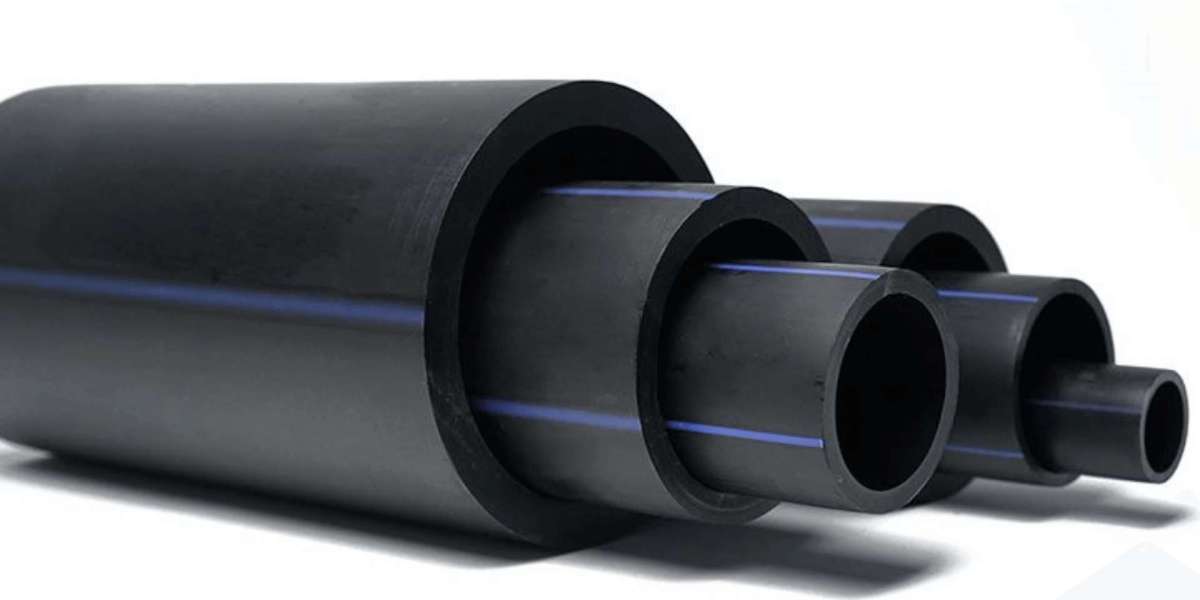Introduction
With increasing demands for efficient, durable, and sustainable water supply systems, HDPE pipes are rapidly becoming the preferred choice for various applications. High-density polyethylene (HDPE) pipes are known for their flexibility, chemical resistance, and ability to withstand harsh environments. In Pakistan and across the world, these pipes are transforming urban water distribution, agricultural irrigation, and industrial water supply systems.
In this article, we’ll delve into how HDPE pipes support effective water supply systems, their applications, installation tips, and why they are an ideal choice for projects demanding both durability and sustainability.
1. What Are HDPE Pipes?
HDPE pipes are made from high-density polyethylene, a thermoplastic polymer known for its strength and versatility. They are widely used in water supply systems because of their distinct advantages over traditional materials like steel, PVC, and concrete.
Key characteristics of HDPE pipes include:
- Flexibility: HDPE pipes can bend, allowing easy installation over long distances and around obstacles.
- Chemical Resistance: They resist corrosion from chemicals and acids, making them suitable for potable water.
- Lightweight: HDPE pipes are lighter than metal pipes, reducing transportation and handling costs.
The popularity of HDPE pipes in water supply systems is largely due to these characteristics, as well as their eco-friendly properties.
2. Key Applications of HDPE Pipes in Water Supply Systems
HDPE pipes offer adaptability and reliability, making them suitable for a wide range of applications:
Urban Water Distribution Networks
- HDPE pipes are commonly used in urban water networks to transport drinking water across cities and residential areas.
- The pipes’ fusion-welded joints reduce the likelihood of leaks, ensuring efficient delivery of potable water.
Agricultural Irrigation
- In agriculture, HDPE pipes are essential for delivering water to farms, helping conserve water and supporting crop yields.
- Their resistance to corrosion makes them ideal for irrigation systems, where they can handle fertilizers and other agricultural chemicals.
Industrial Water Supply
- Many industries in Pakistan use HDPE pipes to transport large volumes of water, as well as for cooling and waste management systems.
- HDPE’s durability and ability to handle various chemicals make it a reliable choice for industrial applications.
3. Advantages of Using HDPE Pipes in Water Supply Systems
Here’s a closer look at why HDPE pipes are preferred for water supply systems:
Durability and Longevity
- HDPE pipes have a lifespan of 50 to 100 years, far outlasting other materials.
- Their flexibility reduces the risk of damage from ground movement or temperature changes.
Flexibility and Ease of Installation
- The pipes’ flexibility allows for easy routing, especially in difficult terrains.
- Installation is faster, reducing labor costs and project timelines.
Corrosion and Chemical Resistance
- Unlike metal pipes, HDPE pipes don’t corrode, ensuring water quality over time.
- Their resistance to chemicals allows them to transport a variety of fluids, not just potable water.
Leak-Free Connections
- HDPE pipes are joined using fusion welding, creating a seamless, leak-proof bond.
- This feature helps conserve water and reduces the risk of contamination.
These benefits make HDPE pipes ideal for long-term use in water supply systems, even in harsh environments.
4. How HDPE Pipes Contribute to Sustainable Water Supply
In addition to performance benefits, HDPE pipes are known for their contributions to sustainable water supply:
Reducing Water Loss:
- Fusion welding minimizes leaks, conserving water—a crucial factor for sustainability in areas with limited water resources.
Energy Efficiency:
- HDPE’s lightweight nature requires less energy for transportation and installation.
Eco-Friendly and Recyclable:
- HDPE pipes are recyclable, reducing environmental impact and waste.
- Lower energy needs in production and installation make HDPE a sustainable choice over other materials.
By reducing water loss and energy usage, HDPE pipes support a greener, more sustainable approach to water supply systems.
5. Installation Considerations for HDPE Pipes in Water Supply Systems
To maximize the efficiency and longevity of HDPE pipes, it’s essential to follow proper installation practices. Here are some key considerations:
Pressure Requirements
- Select pipes based on pressure needs. HDPE pipes come in varying thicknesses to handle different pressure levels.
- For high-pressure applications, ensure that the pipes meet the required standards to avoid performance issues.
Connection Techniques
- HDPE pipes are usually joined through fusion welding or mechanical fittings.
- Fusion welding creates a seamless connection, preventing leaks and contamination in potable water systems.
Maintenance and Inspection
- Periodically inspect HDPE pipes to ensure they maintain their integrity over time.
- Regular maintenance helps catch minor issues before they escalate, extending the system’s life and reliability.
Careful consideration of these factors during installation helps ensure HDPE pipes serve effectively for years to come.
6. Case Studies and Real-Life Examples of HDPE in Water Supply Systems
HDPE pipes have seen successful implementation worldwide, enhancing water supply efficiency and sustainability. Here are a few examples:
Pakistan’s Use of HDPE Pipes
- Various water distribution projects in Pakistan, both urban and rural, have adopted HDPE pipes in Pakistan for their durability and cost-effectiveness.
- Cities and municipalities rely on HDPE to improve water distribution and reduce leakage rates in aging infrastructure.
Global Examples
- Australia: HDPE pipes have been used in large-scale irrigation projects, where durability and chemical resistance were essential to handle different water sources.
- India: Municipalities have increasingly switched to HDPE pipes for urban water distribution, reducing water loss and maintenance costs significantly.
These examples underscore the value of HDPE pipes in creating efficient, leak-free water distribution systems that require minimal maintenance.
7. Choosing the Right HDPE Pipes for Your Water Supply Project
Selecting high-quality HDPE pipes is essential for ensuring safety and efficiency in water supply systems. Here are some tips:
Evaluating Quality and Standards
- Look for HDPE pipes that comply with international standards, ensuring long-lasting performance.
- Certifications provide reassurance that the pipes will function reliably over time.
Selecting Reliable Brands
- Choose reputable brands like Adamjee Durabuilt Pvt Ltd for guaranteed quality and customer support.
- Working with trusted suppliers ensures access to durable HDPE pipes and fittings that meet specific project needs.
These factors help guarantee that your HDPE pipes are up to the demands of your water supply system.
8. HDPE Pipes vs. Other Materials for Water Supply
While HDPE pipes offer many advantages, it’s helpful to compare them with alternative materials:
PVC Pipes
- PVC is lightweight and inexpensive, but it lacks the flexibility and durability of HDPE.
- PVC may be prone to cracking under certain conditions, which can lead to leaks.
Copper Pipes
- Copper has high heat resistance, making it suitable for hot water systems. However, it is more expensive and less resistant to corrosion than HDPE.
- HDPE’s chemical resistance and flexibility make it more suitable for outdoor and industrial applications.
Steel Pipes
- Steel is durable but heavy, expensive, and prone to corrosion, especially in water systems.
- HDPE’s corrosion resistance and lower cost make it more practical for water supply systems.
By comparing these materials, it’s clear why HDPE pipes are often the best choice for water supply systems, especially in regions where cost, durability, and flexibility are important considerations.
9. Conclusion
HDPE pipes in Pakistan and worldwide are revolutionizing water supply systems, providing an efficient, durable, and environmentally friendly option for various applications. From urban distribution networks to agricultural and industrial water supplies, HDPE pipes offer versatility and reliability that other materials can’t match. Their resistance to corrosion, chemical reactions, and physical stress make them an ideal choice for long-term water infrastructure.
With reliable suppliers such as Adamjee Durabuilt Pvt Ltd, HDPE pipes are readily available in Pakistan, supporting the country’s push for sustainable and efficient water systems. Whether you’re involved in a large urban project or a smaller-scale irrigation system, HDPE pipes and fittings can meet your needs, providing leak-free, cost-effective solutions for decades.
By choosing HDPE pipes for your water supply project, you’re investing in a technology that not only meets today’s demands but also aligns with the growing focus on sustainability, resource conservation, and long-term performance.








